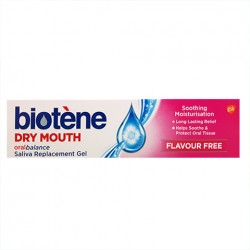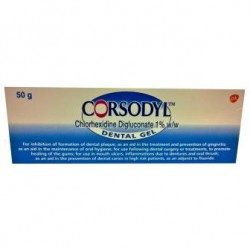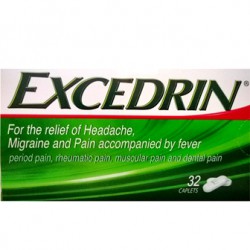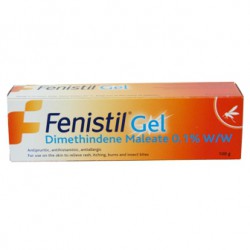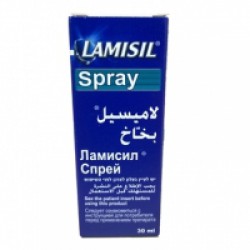Nicotinell patch 21mg

A substitute for nicotine-releasing controlled amounts of nicotine into the bloodstream, thereby helping to reduce the frequency of smoking and quit smoking.
Active Ingredients
Each trans-dermal patch of Nicotinell 21 mg (with an area of 10 square cm) contains:
17.5 mg nicotine (releases approximately 21 mg in 24 hours).
Indications
Nicotinell patches intended as an aid in smoking cessation. It is designed to prevent you from having all the signs of needing a cigarette (urge to smoke) due to smoking cessation.
Nicotinell patch is a nicotine replacement therapy that helps reduce some of the unpleasant withdrawal symptoms that often occur with smoking cessation, such as feeling sick or irritable.
As well, it reduces the desire to smoke by providing some of the nicotine previously inhaled from cigarettes and therefore helps your willpower to resist cigarettes.
Nicotinell patches are intended for use on the skin. When the patches applied to the skin, nicotine passes from the patch, through the skin and into your body.
Reducing the number of cigarettes can increase the chance that you will move on to quit completely.
Instructions
For external use only!
Directions for use:
Decide where you will put the patch. Choose a hairless area of skin to make sure that the patch sticks properly, e.g., the front or side of the chest, the back or the upper arm. Avoid sticking the patch on skin which is red or irritated. If the patch does not stick successfully you may try to stick it on any other body site (such as the outer thighs or top of the buttocks) or re-apply the patch after cleaning the area with medical alcohol and waiting until it dries naturally. Avoid areas where the skin creases or folds when you move (such as over a joint).
Make sure that the skin is completely clean and dry. After a hot bath or shower you may continue to sweat even after wiping your body. Wait until the skin is completely dry before sticking the patch on. Never powder or oil your skin before putting on a patch as it may not stick properly.
The sachet is child-proof. Open it by cutting with scissors along the marked line. Do not cut the patch. The patch should be used immediately after removing it from the sachet.
First remove the smaller portion of the metal cover and then the large part. Do not touch the adhesive portion of the sticker.
Attach the patch to the place you selected, with the sticky side to the skin, and press firmly with the palm of your hand for at least 20 seconds. Measuring this time using a clock can help. The pressure applied is important because the patch is pressure sensitive and will not be properly applied if sufficient pressure is not applied. Run your finger around the edges of the patch to make sure that the edges are firmly pasted.
During handling the patch avoid contact of the hands with the eyes and nose. Wash your hands after application of the patch.
Do not touch and fiddle with the patch during the day.
You may bathe, shower, swim or exercise with the patch. If you applied the patch according to the instructions, it will usually remain in its place. If the patch has fallen off, carefully discard it and apply a new patch to a different area of the body.
Apply a new patch to the skin once a day, at the same time every day (preferably in the morning). Leave the patch on for 24 hours. After 24 hours, remove and fold it, with the adhesive side facing inside, and carefully discard it. If you are pregnant, remove the patch before bedtime.
The new patch should be applied each time to a different area of the skin.
The medicine is available in three doses whose purpose is to enable gradual withdrawal from nicotine dependence. The right dose for you depends on how many cigarettes you smoke per day. The size of the patch you use may vary during treatment. This is because your dependence on nicotine will change and therefore the dosage of nicotine in the trans-dermal patch you use may be too high or too low for you. Do not cut the trans-dermal patch in order to reduce the dose.
Usually the treatment period is 3 months. However, if you do not stop smoking after 3 months, you may be advised to continue treatment or additional treatments.
Recommended dosage unless otherwise prescribed by a doctor:
|
|
Initial stage 3-4 weeks
|
Continuation of treatment 3-4 weeks
|
End of treatment 3-4 weeks
|
|
For smokers of 20 cigarettes or more a day
|
Nicotinell 21mg/24h Patch |
Nicotinell 14 mg/24h Patch or Nicotinell 21 mg/24h Patch*
|
Nicotinell 7 mg/24h Patch or Nicotinell 14 mg/24h Patch and then Nicotinel 7 mg/24h Patch*
|
|
For smokers of less than 20 cigarettes a day
|
Nicotinell 14 mg/24h Patch or increase to Nicotinell 21 mg/24h Patch*
|
Nicotinell 7 mg/24h Patch**or Nicotinell 14 mg/24h Patch
|
Stop treatment**or Nicotinell 7 mg/24h Patch
|
* Depending on the response to withdrawal
**If the symptoms are satisfactory
Do not start the program at the "End of treatment" stage.
Apply one trans-dermal patch a day. It is important to make sure the patch is affixed in the day and at night, especially if you need help to overcome the early morning craving for a cigarette.
The Nicotinell patch program therapy can itself be a sufficient substitute for nicotine. However, people who smoke more than 10 cigarettes a day, people who experience breakthrough cravings to smoke, or those who have not been successful at quitting smoking with single-therapy can benefit from the use of another nicotine replacement therapy. Nicotine-containing gum preparations can be used to relieve breakthrough cravings to smoke. When using these products in conjunction with the use of patches, do not use more than 15 pieces of gum containing 2mg nicotine, or 10 pieces of gum containing 4mg nicotine per day. You should try to use as few pieces of gum as possible per day.
You might feel a sudden craving to smoke long after you have given up smoking and completed using the Nicotinell patch program. Remember! You can use nicotine replacement therapy again if you feel a sudden craving to smoke again.
If you feel that the medicine is too strong or is not helping you, consult with the doctor or pharmacist.
Do not exceed the recommended dosage.
If you forget to change your trans-dermal patch at the required time, change it as soon as you remember, then continue as usual.
Do not take a double dose.
Precautions regarding children:
Make sure that even a used sticker does not get into the reach of children and infants.
The nicotine dose in the patch does not cause damage in smoking adults, but can cause poisoning and even death in young children. Each Nicotinell patch is sealed in a special sachet that is child-and infant-proof. During use, and even after it is removed, the patch still contains nicotine, and therefore it should be folded and discarded without getting into the reach of children and infants.
When it is time to remove the sticker, remove it carefully, fold it with the sticky side facing in, and discard it somewhere out of the reach of children and infants.
Never use more than one patch at a time. An overdose of nicotine can be dangerous.
If you accidentally took a higher dosage, remove the patch and wash the skin with water. Do not use soap. The skin will continue to deliver nicotine into the bloodstream for several hours after the patch is removed.
A smoking cessation support program will increase your chances of succeeding in the detoxification process.
This medicine is not intended for children under the age of 12 years.
Use in adolescents (age 12-18) - at the recommendation of a doctor.
Warnings
Do not use Nicotinell patch 21 mg if you are sensitive (allergic) to the active ingredient or any of the additional ingredients contained in the medicine.
Do not use this medicine if you do not smoke or smoke occasionally
Do not use this medicine if you have a skin disease that can worsen as a result of using the patch.
Before treatment with Nicotinell patch 21 mg, tell the doctor if:
- You are pregnant or breastfeeding
- You have heart disease (including heart attack, worsening chest pain, disorders of heart rhythm), uncontrolled high blood pressure or stroke for which you are being hospitalized
- You have serious liver or kidney problems
- You have had a stomach ulcer in the past
- You have an overactive thyroid gland
- You have a tumor of the adrenal gland (pheochromocytoma)
- You are diabetic
If you are taking, or have recently taken, other medicines, including non-prescription medicines or nutritional supplements, tell the doctor or pharmacist. The effect of some medicines can be altered when you stop smoking. If you are already taking other medicines regularly you should tell your doctor or pharmacist.
Diabetics should monitor their blood sugar levels more often than usual when starting to use the patch because insulin/medication requirements may alter.
Use of Nicotinell patch 21 in pregnancy will only be done according to a doctor's instructions.
Smoking during pregnancy is associated with risks such as growth disorders of the fetus before birth, premature birth or stillbirth. Stopping smoking is the single most effective way to improve both your health and that of your baby. The earlier smoking stops, the better. Ideally, stopping smoking during pregnancy should be done without nicotine replacement therapy. However, if you have tried and this is not possible, nicotine replacement therapy may be used because the risk to the developing baby is lower in comparison to continued smoking. The decision to use nicotine replacement therapy should be made as early on in the pregnancy as possible, with the aim of discontinuing use after 2-3 months. Patches may be preferred if you suffer from nausea. If patches are used, they should be removed before going to bed at night.
In breastfeeding it is preferable to use nicotine replacement therapy that can be taken intermittently (not trans-dermal patches).Try to breastfeed right before you take the medicine to ensure that the baby gets the smallest amount of nicotine possible. If you need to use nicotine replacement therapy to help you give up smoking, the amount of nicotine that the baby may receive is significantly smaller and less harmful than smoke inhalation.
If you are pregnant or breastfeeding, consult with the doctor before using medicines.
Continued smoking when using the patches may increase the incidence of side effects due to the dangers of smoking, including cardiovascular function disorders.
The medicine is intended for adults and adolescents above the age of 12 years.
Please do not consider this information as an alternative to consulting your physician or pharmacist.
For further information on instructions for use, risks and side effects, please read the patient package insert and consult your doctor or pharmacist.
Read the patient package insert carefully before starting to take any medication.












